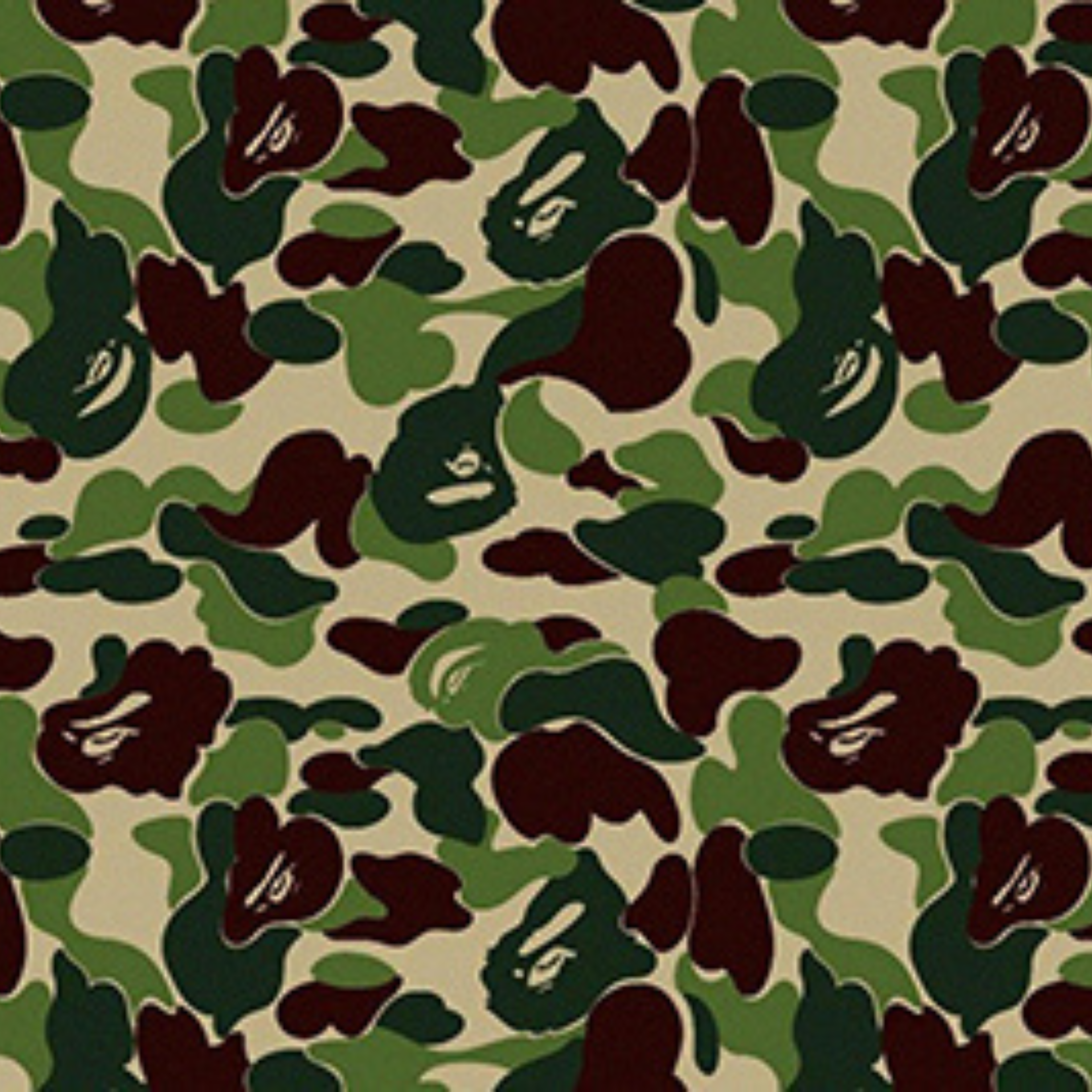BAPE: The Evolution of a Streetwear Legend
From its origins in Tokyo to its global status today, BAPE (A Bathing Ape) has evolved from a local streetwear shop into a groundbreaking fashion icon. Founded in 1993 by Nigo, BAPE has left an indelible mark on the world of streetwear, known for its unique designs, signature camo, and influential collaborations. Here’s a deep dive into BAPE's journey and what sets it apart in the fashion world.
The Birth of BAPE: Tokyo’s Streetwear Game-Changer
BAPE’s story begins in 1993, when Nigo opened a small store in Tokyo’s Ura-Harajuku district. The brand’s name, "A Bathing Ape," playfully refers to the Japanese saying about a "bathing ape in lukewarm water," symbolizing a relaxed, carefree attitude. From the start, BAPE aimed to blend high fashion with street culture, creating a brand that felt both exclusive and accessible.
Nigo's vision was clear: to infuse the streetwear scene with a mix of bold graphics and playful aesthetics. BAPE’s early designs, including the now-iconic ape logo and distinctive camouflage patterns, quickly gained traction among Tokyo’s youth, setting the stage for what would become a global phenomenon.
The Surge to Fame: BAPE Goes Global
BAPE’s rise to international fame began in the late 1990s and early 2000s. The brand’s unique approach—highlighted by limited releases and striking designs captured the attention of celebrities and influencers worldwide. Key to this success was BAPE’s collaboration with Pharrell Williams, whose endorsement helped introduce the brand to a broader audience.
Another significant milestone was the opening of BAPE’s flagship store in New York City in 2005. This move marked BAPE’s expansion into the U.S. market, solidifying its status as a key player in the global streetwear scene. The store’s exclusive releases and high-profile events quickly made it a hotspot for fashion enthusiasts.
Iconic Designs and Collaborations
BAPE is renowned for its standout designs and innovative collaborations. Some of the brand’s most iconic products include:
The BAPE Shark Hoodie: Featuring a bold shark graphic and a zippered hood, this hoodie became a streetwear staple, symbolizing BAPE’s unique style.
BAPE Camo: The brand’s signature camouflage pattern appears on a wide range of products, from clothing to accessories, becoming synonymous with BAPE’s identity.
Collaborations with Nike: The BAPE x Nike Air Force 1 and BAPE x Nike Dunk collaborations are legendary in the sneaker world, with limited editions selling out almost instantly.
BAPE x Marvel: This collection merged streetwear with superhero culture, showcasing BAPE’s ability to blend pop culture with fashion in exciting ways.
The Cultural Impact of BAPE
BAPE’s influence extends far beyond fashion. The brand has played a pivotal role in shaping streetwear culture, setting trends that many other brands follow. Its emphasis on exclusivity and collaboration has redefined how streetwear is perceived and marketed.
BAPE’s limited releases create a sense of urgency and exclusivity, driving demand and fostering a dedicated fan base. This strategy has become a hallmark of the brand, influencing how other streetwear labels approach product drops.
Preserving the Legacy: BAPE’s Future
Despite its global success, BAPE remains committed to its core values of creativity and exclusivity. The brand continues to innovate with new designs and collaborations, while maintaining its connection to street culture.
As BAPE moves forward, it’s clear that the brand will continue to be a major player in the fashion world, blending high fashion with street culture in ways that keep it fresh and relevant.
Conclusion
BAPE’s journey from a small Tokyo shop to a global fashion powerhouse is a testament to its innovative approach and cultural impact. With its iconic designs, strategic collaborations, and commitment to exclusivity, BAPE has solidified its place as a streetwear legend. As it continues to evolve, BAPE remains at the forefront of fashion, proving that its influence is as strong as ever.

Share:
Supreme: From Skater Roots to Streetwear Royalty
Best Sneakers to Buy in 2025 – Must-Have Picks